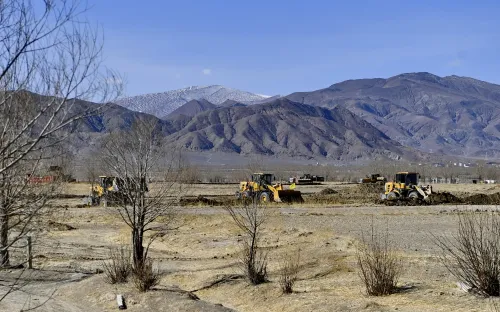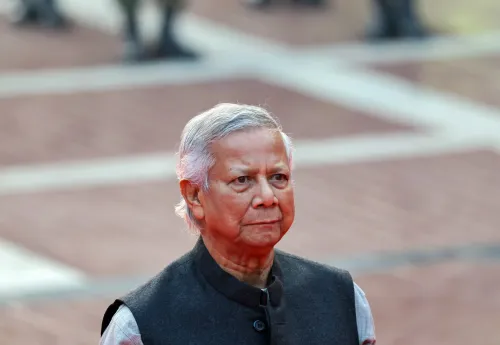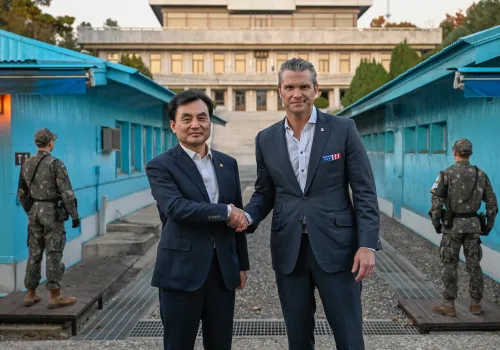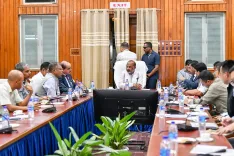Why Did More Than 300 South Korean Workers Return Home After US Immigration Detention?

Synopsis
Key Takeaways
- Over 300 South Korean workers returned home after a week of detention.
- The incident sparked public outrage in South Korea.
- The South Korean government is pushing for visa reforms.
- Negotiations took place to secure the workers' release.
- Future travel opportunities for workers may depend on changes in US immigration policies.
Seoul, Sep 13 (NationPress) Over 300 South Korean workers returned home on Friday following a week of detention by US immigration authorities in Georgia, marking an extraordinary incident that left Seoul perplexed and raised concerns about its relationship with its ally.
A Korean Air chartered aircraft, which transported 316 South Koreans along with 14 foreign nationals, landed at Incheon International Airport, located west of Seoul, around 3:23 p.m. just a day after their release from detention. This followed an immigration sweep at a construction site for an electric car battery plant co-managed by Hyundai Motor Group and LG Energy Solution Ltd. in Bryan County.
The workers were released from their detention facilities in Folkston early Thursday (local time), as Seoul engaged in intensive negotiations with Washington to secure their release and safe return.
Upon their arrival, they underwent a special expedited process and emerged from the terminal to reunite with their families, many expressing their emotions through tears of relief, as reported by Yonhap news agency.
Chartered buses were arranged by their companies to transport them back home.
The Presidential Chief of Staff, Kang Hoon-sik, personally welcomed the workers at the airport.
"We did our utmost, but we regret that we could not facilitate an earlier return," Kang informed reporters after meeting with the workers. "We plan to advocate for reforms in the US visa system regarding issuance and eligibility, which may include the creation of a new visa category."
Kang highlighted discrepancies in how both nations interpret the scope of the short-term B-1 visa for business travelers, noting that system reforms could take time.
"Conversations must advance swiftly to eliminate misunderstandings, ensuring that companies can operate and invest securely in the United States," he added.
Heavy security measures were implemented around the terminal to manage the influx of people.
The airport was also filled with international media eager to document the workers' return, underscoring the significant global attention the incident has garnered over the past week.
The detention shocked and enraged the public in South Korea, especially after US immigration authorities released footage depicting Koreans being searched, shackled, and handcuffed before being loaded onto a transport vehicle.
This incident prompted South Korea's top diplomats to travel to Washington for discussions with Trump administration officials, while senior executives from Hyundai and LG also visited Georgia to address the fallout.
After negotiations, Seoul and Washington agreed on a voluntary departure plan for the workers instead of deportation. Seoul has worked diligently to ensure this incident does not adversely affect their future travel to the US.
According to South Korean officials, the workers' release was delayed by a day as US President Donald Trump encouraged them to remain in the country, as his administration seeks to strengthen cooperation with Seoul to revitalize US industries such as shipbuilding and semiconductors.
Seoul stated that the workers will return home and may consider future travel to the United States.
Among the foreign nationals on board were 10 Chinese, three Japanese, and one Indonesian. The majority of detainees were men, with only 10 women included.
One South Korean, having family in the US, opted to remain in custody to pursue legal action, seeking release on bail.
Most of the workers held short-term business or 90-day recreational visas for work, arguing that the existing US visa system has hampered their project execution in America and advocating for reforms, including the establishment of a new work visa or increasing visa quotas.
Following discussions with US Secretary of State Marco Rubio on Wednesday (local time), Foreign Minister Cho Hyun indicated that both sides agreed to collaborate on forming a working group aimed at enhancing the visa system for South Korean businesses.
In a press conference on Thursday, President Lee Jae Myung expressed that companies are "bound to hesitate" in making direct investments in the US if similar incidents occur again, and he expressed hope for ongoing dialogues with Washington regarding visa reforms.









